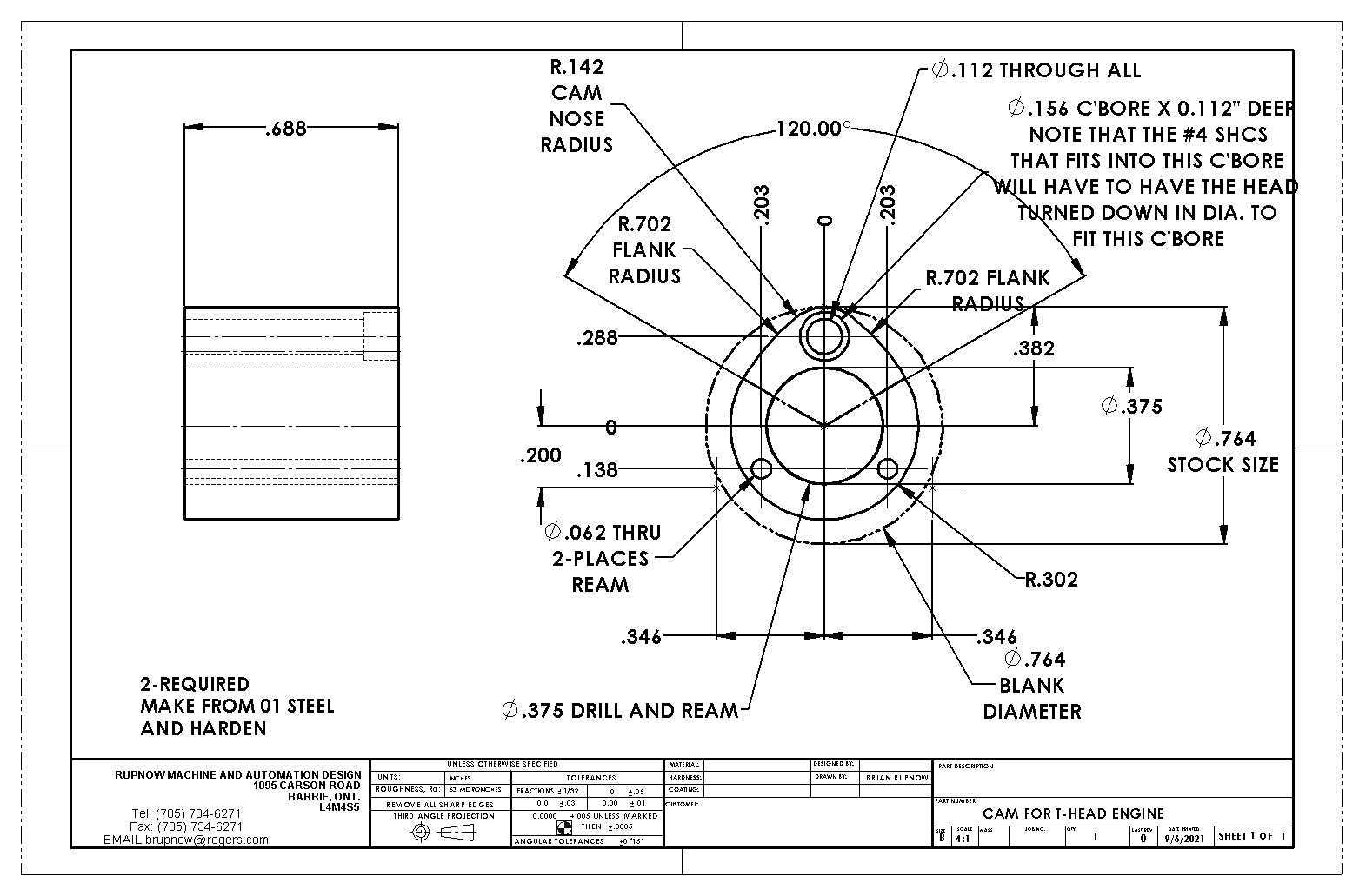Here is the true story of the cam and valve timing that I use for all of my gasoline engines. This cam is longer than the most cams are, but the profile is exactly the same. I use the same profile for both intake and exhaust valves. I use this profile for flathead, T-head, overhead valve and overhead cam engines. It works fine for all of them. You can see on the drawing that only 120 degrees of this cam has any effect on the lifter or pushrod. Since there is a 2:1 ratio between the camshaft and crankshaft, that means that this cam actually has 240 degrees of influence on the engine. I set my exhaust valve to begin opening 40 degrees before the piston reaches bottom dead center on the power stroke. Due to the cam profile, the exhaust valve will begin closing 20 degrees after top dead center on the intake stroke. The intake valve begins to open 15 degrees before top dead center on the exhaust stroke, remains open throughout the entire intake stroke, and closes 45 degrees after bottom dead center on the compression stroke. The ignition timing is set to spark 12 degrees before top dead center on the power stroke.





































































